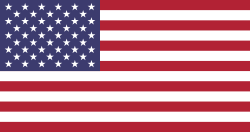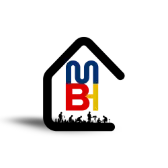Building Environment> Building Occupancy Types
Access wide range of products
Building occupancy classifications are essential for determining how a building is used, its design requirements, safety standards, and legal regulations. Occupancy types affect everything from fire safety codes to egress paths and space design. Understanding the different occupancy types helps architects, engineers, and construction professionals create safe and functional spaces suited to their intended use. This guide outlines the major building occupancy types, provides examples, and links to photos to enhance understanding.
Residential (Group R) Occupancy
Residential buildings are designed for living spaces and accommodations, including everything from single-family homes to large apartment buildings and hotels. They are subject to strict safety codes, especially concerning fire protection, ventilation, and access to emergency exits.
Key Subcategories:
- R-1: Hotels, motels, and boarding houses (buildings with occupants who are transient, staying less than 30 days).
- R-2: Apartment buildings, dormitories, and long-term rental housing.
- R-3: Single-family homes and duplexes, as well as some small group homes.
- R-4: Residential care or assisted living facilities, usually with 6-16 occupants.
Example:
- Single-family home (R-3), typically constructed with wood or brick.
- Apartment complexes (R-2) built with multi-unit layouts and shared common areas.
Assembly (Group A) Occupancy
Assembly buildings are designed for large gatherings of people, whether for entertainment, worship, or dining. Due to the high occupant load, these buildings are subject to rigorous safety standards, particularly concerning emergency exits, fire suppression, and crowd control.
Key Subcategories:
- A-1: Theaters and performing arts venues, where occupants are seated in fixed locations.
- A-2: Restaurants and bars, where occupants may gather for eating and drinking.
- A-3: Worship spaces, galleries, and recreational facilities.
- A-4: Indoor sports arenas or venues with spectator seating.
- A-5: Outdoor arenas or venues, such as stadiums.
Example:
- Concert halls (A-1) with seating arrangements for performances.
- Sports arenas (A-4) built to accommodate large numbers of spectators with well-defined exit routes.
Business (Group B) Occupancy
Business occupancies refer to buildings used for office work, professional services, and general business activities. These are spaces where people work rather than live or gather for entertainment. Business occupancies must adhere to specific fire codes, occupancy limits, and accessibility standards.
Key Features:
- Office buildings, banks, and administrative centers.
- Typically low-risk in terms of fire hazards, but with requirements for emergency egress and sprinkler systems.
Example:
- Corporate office buildings with multiple floors for various business activities.
- Banks and insurance offices, where professional services are provided.
Educational (Group E) Occupancy
Educational buildings are designed for instructional purposes. This category typically includes schools for children from preschool through the 12th grade but can also encompass other educational facilities where instruction takes place for more than 12 hours a week. Safety regulations in these buildings are focused on ensuring safe evacuation procedures for young students.
Key Features:
- Fire safety standards are stringent to protect young occupants.
- Emergency exits, smoke detectors, and sprinklers are crucial components.
- Classrooms, auditoriums, and play areas must meet space and safety codes for educational use.
Example:
- Elementary schools with classrooms, playgrounds, and gyms designed for children.
- High schools with larger student populations and specialized spaces for science labs, sports, and arts.
Industrial (Group F) Occupancy
Industrial buildings are used for manufacturing, fabricating, and processing products or materials. These occupancies are divided into two groups based on the level of hazard: light industrial (F-1) and low-hazard industrial (F-2). These spaces are highly regulated due to the potential for machinery-related risks and material handling hazards.
Key Features:
- Focused on production processes, with machinery and equipment.
- Requires specific ventilation, fire protection, and spacing to ensure safety for workers.
Example:
- Manufacturing plants for light assembly or production (F-1).
- Warehouses with storage and handling of low-risk goods (F-2).
Mercantile (Group M) Occupancy
Mercantile occupancies include buildings used for the display and sale of merchandise. These are generally retail stores, shopping centers, or showrooms. Safety concerns for mercantile buildings often focus on managing large crowds and ensuring safe and clear egress during emergencies.
Key Features:
- Design focuses on customer safety and ease of movement.
- Fire protection and emergency exit plans are crucial, especially in larger spaces.
- Includes malls, supermarkets, and specialty retail shops.
Example:
- Large shopping malls with open layouts and multiple egress points.
- Supermarkets designed to accommodate large numbers of shoppers.
Institutional (Group I) Occupancy
Institutional occupancies are used for medical care, rehabilitation, and supervision of people who may not be able to evacuate without assistance. These include hospitals, nursing homes, and prisons. Due to the vulnerability of the occupants, these buildings are heavily regulated in terms of safety, fire protection, and access.
Key Subcategories:
- I-1: Group homes, alcohol and drug centers with 24-hour custodial care.
- I-2: Hospitals, nursing homes, and other medical care facilities.
- I-3: Prisons, jails, and detention centers.
- I-4: Daycare facilities for infants or adults.
Example:
- Hospitals with specialized spaces for emergency care, operating rooms, and patient wards.
- Nursing homes designed for long-term care, with safety features like handrails and emergency lighting.
Institutional (Group I) Occupancy
Institutional occupancies are used for medical care, rehabilitation, and supervision of people who may not be able to evacuate without assistance. These include hospitals, nursing homes, and prisons. Due to the vulnerability of the occupants, these buildings are heavily regulated in terms of safety, fire protection, and access.
Key Subcategories:
- I-1: Group homes, alcohol and drug centers with 24-hour custodial care.
- I-2: Hospitals, nursing homes, and other medical care facilities.
- I-3: Prisons, jails, and detention centers.
- I-4: Daycare facilities for infants or adults.
Example:
- Hospitals with specialized spaces for emergency care, operating rooms, and patient wards.
- Nursing homes designed for long-term care, with safety features like handrails and emergency lighting.
Institutional (Group I) Occupancy
Institutional occupancies are used for medical care, rehabilitation, and supervision of people who may not be able to evacuate without assistance. These include hospitals, nursing homes, and prisons. Due to the vulnerability of the occupants, these buildings are heavily regulated in terms of safety, fire protection, and access.
Key Subcategories:
- I-1: Group homes, alcohol and drug centers with 24-hour custodial care.
- I-2: Hospitals, nursing homes, and other medical care facilities.
- I-3: Prisons, jails, and detention centers.
- I-4: Daycare facilities for infants or adults.
Example:
- Hospitals with specialized spaces for emergency care, operating rooms, and patient wards.
- Nursing homes designed for long-term care, with safety features like handrails and emergency lighting.


